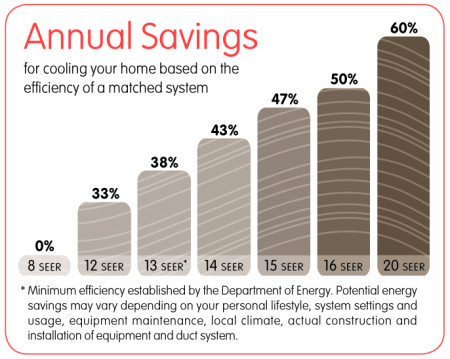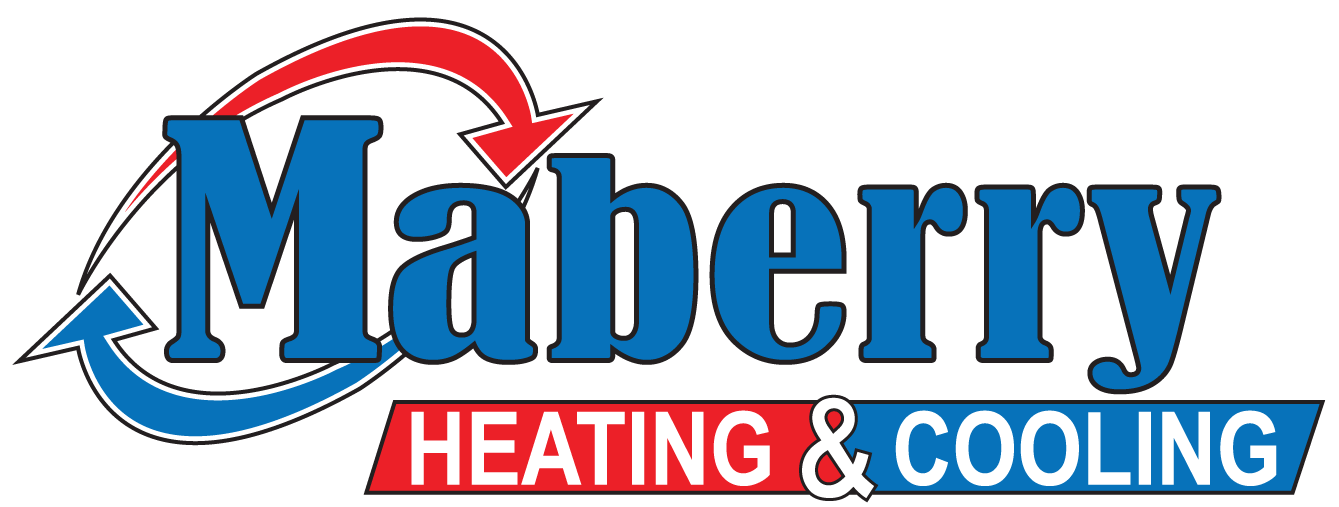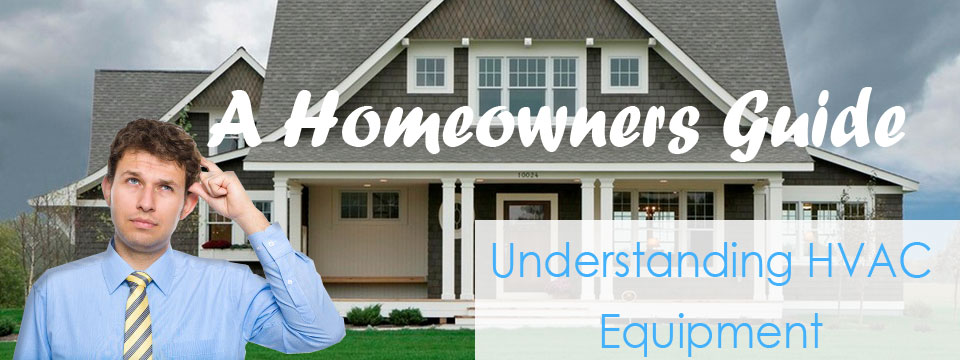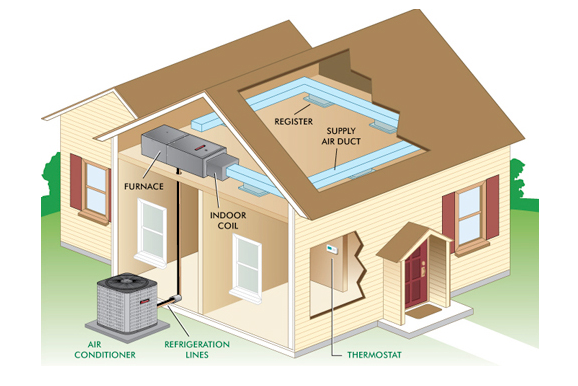 When it comes to investing in a new HVAC system, the answer of which system to buy is about “as clear as mud”. Purchasing any new appliance can be overwhelming, especially if it breaks suddenly. When it comes down to spending your hard-earned money and your everyday comfort, you clearly want to make the right choice.
When it comes to investing in a new HVAC system, the answer of which system to buy is about “as clear as mud”. Purchasing any new appliance can be overwhelming, especially if it breaks suddenly. When it comes down to spending your hard-earned money and your everyday comfort, you clearly want to make the right choice.There are so many different options to choose from when it comes to equipment: type, size, warranty, brand name, gas vs. electric, efficiency rating, features?!?! Even more questions come up as you meet different contractors, each telling you something a bit different. This guide is meant to help you as the homeowner: understand the equipment, know the lingo, and learn what it takes to make a wise and informed decision when purchasing a new HVAC system.
System Types
The two basic configurations of residential HVAC systems are split systems and package systems.
Split System
Consists of an indoor unit and a separate outdoor unit connected by wiring and refrigerate lines
Packaged System
Consists of one unit outside, containing both the inside and outside components, packaged in one box
Variations
There are different variations of split and package systems, mainly depending on which fuel you choose to use. The main choices here would be electric, natural or propane gas, or both.
Air Conditioner– Designed to dehumidify and extract heat from your home. Utilizes electricity only.
Heat Pump– Like an air conditioner, heat pumps are designed to dehumidify and extract heat from your home. A heat pump, however, uses a reversing valve, which allows it to draw heat from the outdoor air in the winter time. Heat pumps are efficient at removing heat down to around 35-40 degrees. At that point, resistance heat or other means must be used to supplement. Utilizes electricity only.
Electric Resistance- Resistance heat transmits electricity though heating elements. As the elements heat up, the system’s blower is activated to distribute the heat through the air ducts. Electric resistance heat is often more expensive than heat produced by other means.
Gas Furnace- Designed to use combustible fossil fuels such as natural or propane gas to heat your home. Combustion occurs through burners inside a heat exchanger. Spent gasses are then expelled from the furnace. The system’s blower passes over the heat exchanger before it distributes air into the ducts.
Dual Fuel- Designed to utilize both electricity and fossil fuel. Uses a heat pump for primary heating down to the balance point (the temperature at which the heat pump begins to struggle to keep up), usually somewhere around 35-40 degrees Fahrenheit outdoor temperature. The furnace then takes over to provide secondary heating.
Split System Components 
Remember that split systems are composed of separate indoor and outdoor sections. The indoor components are connected directly to the air ducts and contain the blower used to distribute the air. The outdoor portion contains the “heart” of the system, the compressor. The compressor is what pumps refrigerant through the components of the AC system, removing heat and humidity.
Every AC system contains two coils: the evaporator coil (indoor portion) and the condensing coil (outdoor portion). These coils are connected by copper refrigerate lines. This is a sealed system that contains a certain amount of refrigerant required for proper operation. Systems have service ports allowing technicians to check the amount of refrigerant in a system, adding or removing as necessary. The amount of refrigerant varies from system to system due to coil sizes and the length of copper line sets connecting them.
Outside components are usually fairly easy to spot. They are the noisy cubes sitting outside everyone’s house. These components are called condensers and are either strictly air conditioners or heat pumps. The differences in appearance are minimal and the untrained eye couldn’t tell the difference. An easy way to tell is if it runs during the winter, it’s probably a heat pump condenser, unless something’s wrong :)!
Depending on which fuel variation you choose, your split system could include these indoor components:
Air handler– contains the blower and evaporator coil
OR
Furnace– contains the blower, gas components, and heat exchanger
Coil– evaporator coil paired up with a furnace to complete the indoor section of the AC system; usually connected in between the furnace and the supply air duct
Package Systems
Package systems take these components and group them together under one housing. This is installed as a central unit on the outside of your home. It attaches to your duct system through the exterior wall. Package units vary just as split systems do. The most common are:
Package Heat Pump
Package Gas
Package Dual Fuel
All three of these variances contain the components needed for both heating and cooling operations. The only component inside the home would be the ductwork, which attaches directly to the unit, and the thermostat.
So now that you know the basic differences in equipment, we can move on to efficiency and what makes two seemingly similar looking systems much different.
Sizing
Equipment sizing is probably the most important factor when choosing equipment for a home. This can only be done by performing a Manual J load calculation. Through a complex series of calculations and inputs, the HVAC designer is able to analyze all aspects of the thermal characteristics of every wall, floor, ceiling, door and window. An HVAC load calculation also takes into consideration other factors such as the home’s geographic location, orientation to the sun, envelope tightness, duct leakage, lights and appliances.
Equipment is sized in tons (as in 12,000 BTU/ton). Residential systems vary from 1.5-5 tons. Keep in mind, bigger is not always better. A load calculation can tell you exactly what size your home needs, keeping energy costs down.
Efficiency

SEER Rating
System efficiency is something we might not think too much about when purchasing new equipment. But, it’s something you’ll definitely think about every month thereafter. Equipment efficiency is most often measured in SEER (Seasonal Energy Efficiency Ratio) rating. The higher the SEER, the better the energy performance, the more you save. The Dept of Energy has set the minimum SEER rating for new equipment at 13. This rating will be raised to a minimum of 14 effective January 1, 2015. Units with a higher SEER rating cost more up front, but can save hundreds over the life of the unit.
*A split system’s SEER rating is derived from matching the outdoor unit and indoor units. These ratings can vary depending on how they are matched up. Ask your contractor for these ratings before you buy.
Air Ducts
Purchasing new equipment with a high efficiency rating doesn’t guarantee energy savings. Your home’s air ducts are nearly as important as the unit itself. Leaky, restricted, or improperly sized duct could result in significantly higher energy costs.
Repairing VS Replacing
In order to take advantage of a new high efficiency system, you must take your air ducts into consideration. EnergyStar reports that,
“In a typical house, about 20 to 30 percent of the air that moves through the duct system is lost due to leaks, holes, and poorly connected ducts. The result is higher utility bills and difficulty keeping the house comfortable, no matter how the thermostat is set.”
Taped seams can become dried out and connections can become loose over time. Duct sealing may be a good option for air ducts that are still structurally intact but have leakage. However, if your air ducts are 15-20 years old or in poor condition, you may looking at replacement. Ask a professional you trust to take a look and give a recommendation.
Brand Name
 National advertising is prevalent for almost every commodity for the home. That being said, HVAC equipment manufacturers rarely do much advertising themselves. For the most part, you rarely hear of what brands of equipment are out there.
National advertising is prevalent for almost every commodity for the home. That being said, HVAC equipment manufacturers rarely do much advertising themselves. For the most part, you rarely hear of what brands of equipment are out there.
All HVAC equipment is basically the same components in different shells. Some manufacturers do have brand-specific patented components in them, like Trane’s spine-fin coil (pictured), but the majority of them are the same inside. Much like the auto industry, HVAC equipment manufacturers put out basically the same product under different names. Did you know that Trane, American Standard, and Ameristar are all subsidiaries of the same company, Ingersoll Rand?
So, does it really matter whose badge is plastered to the side of the box? Not really. What really matters is the company that will stand behind the product. Do they stand behind the products they install? How about the availability of parts when it breaks? Can it be fixed today? tomorrow? or in the next week? What about the warranty? Will it be out-of-pocket expense for these parts or are they covered? Good questions to ask before you buy.
Warranties
Equipment warranties differ from equipment variety and brand name. Most manufacturers offer a 10 year registered parts warranty with new equipment. Stainless steel heat exchangers often have either a 20 year or lifetime warranty. Refrigerant is usually not covered under warranty. Labor warranties are usually offered for a fee. Be sure to register all new equipment within a 30 day period to take advantage of the full warranty. Check with your contractor on warranty specifics.


